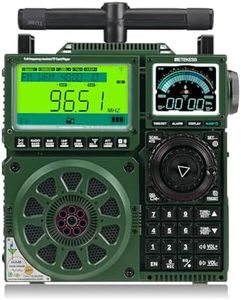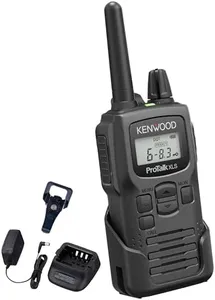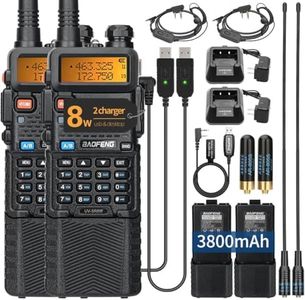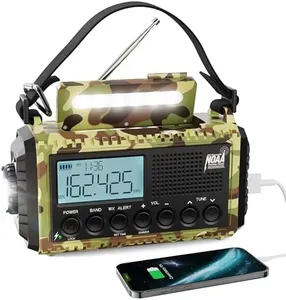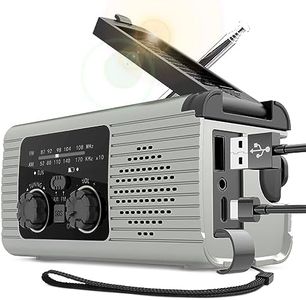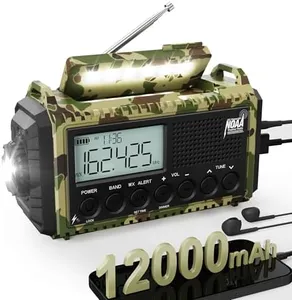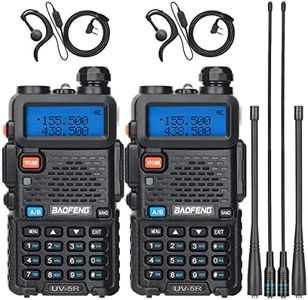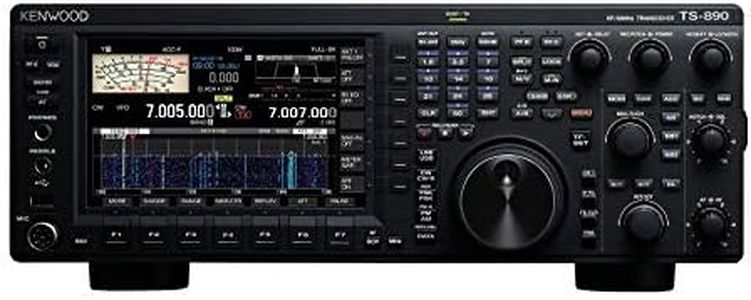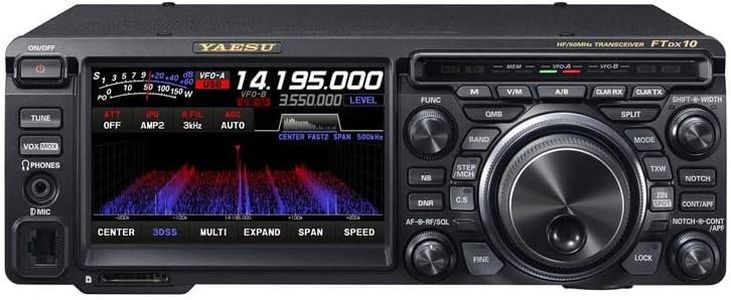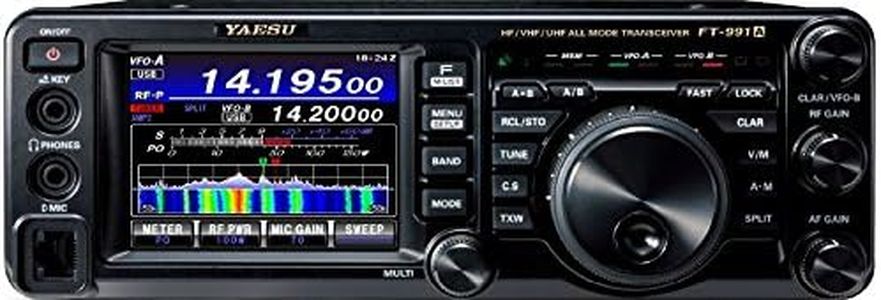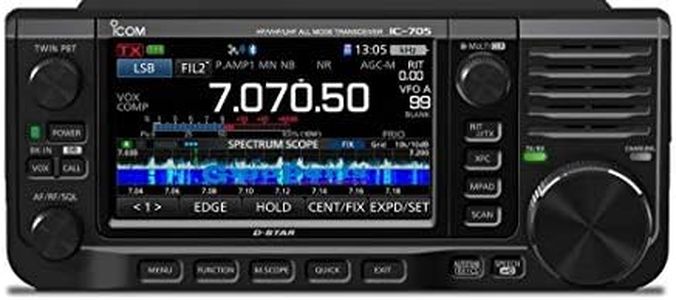10 Best Ham Radios 2025 in the United States
Recommended lists
Our technology thoroughly searches through the online shopping world, reviewing hundreds of sites. We then process and analyze this information, updating in real-time to bring you the latest top-rated products. This way, you always get the best and most current options available.

Our Top Picks
Winner
BAOFENG 5RM Ham Radio 10W Long Range Handheld NOAA Weather Receiver 2500mAh Battery UV-5RM Radio with Programming Cable,Speaker Mic,Tactical Antenna,Type-C Charging,2Pack
Most important from
113 reviews
The BAOFENG UV-5RM Ham Radio is a robust and versatile option for ham radio enthusiasts. Its wide frequency range, covering AM, NOAA, UHF, and VHF bands, ensures adaptability for various communication needs. The 10W power output enables long-range communication, which is further enhanced by the 18.5-inch foldable tactical antenna that improves signal quality.
The radio includes 999 programmable channels, offering extensive storage and ease of use with its one-key frequency copy function and support for Chirp programming software. The 1.77-inch color screen makes navigation user-friendly, and the high-quality speaker microphone ensures clear communication even in noisy environments. The device is equipped with multiple charging options, including a 2500mAh rechargeable battery and USB-C charging, making it convenient to keep it powered on the go.
The inclusion of two full kits in the package allows for immediate use and provides value for money. However, the radio is not water-resistant, which might be a drawback for outdoor use in wet conditions. Additionally, its portability might be slightly impacted by the weight of 3.36 pounds and the need for carrying multiple accessories. For those looking for a reliable ham radio with excellent range and multiple features, the BAOFENG UV-5RM is a solid choice, though it may not be ideal for water-prone environments.
Most important from
113 reviews
ICOM 7300 02 Direct Sampling Shortwave Radio Black
Most important from
182 reviews
The ICOM 7300 02 Direct Sampling Shortwave Radio is a robust choice for amateur radio enthusiasts, primarily due to its powerful 100W output, which provides ample strength for communication. This model covers an impressive frequency range of 0.030-74.800 RX frequencies, allowing users to connect with various channels and modes including SSB, FM, and AM, which enhances its versatility in different operating conditions.
One of the standout features is its direct sampling receiver type, which generally offers high performance and improved signal clarity. The built-in auto-tuner is another plus, simplifying the setup process for users, while the included components like the HM-219 hand microphone and installation hardware facilitate a complete package for immediate use.
Portability is reasonable with a weight of 8.4 pounds, making it manageable for transport, but it might be on the heavier side for some users looking for ultra-portable options. Additionally, while the size (9.4 x 9.4 x 3.7 inches) is compact enough for many settings, it may not fit easily in all portable setups. The display and interface are user-friendly, which is beneficial for those who might not be tech-savvy, though some users might find it slightly lacking in advanced features compared to more expensive models. Durability and build quality are commendable, ensuring it can withstand regular use, though it’s always advisable to handle it carefully due to its electronic nature.
The ICOM 7300 02 is well-suited for amateur radio operators looking for a reliable and powerful radio option. Its strengths lie in its output power, frequency range, and user-friendly features, while some may find the weight and limited advanced features as drawbacks. If you're serious about ham radio, this could be a solid investment.
Most important from
182 reviews
KENWOOD ProTalk PKT-300 Compact UHF Two Way Radio, 2W Power, 6 Channels, VOX and Privacy Talk, 10 Call Alerts, Rugged MIL-STD 810, IP52 Weather-Resistant, 16-Hour Battery, 6-Mile Range, LCD Display
The KENWOOD ProTalk PKT-300 is a solid choice for those needing reliable short-range communication, especially in professional or work settings like warehouses or construction sites. It operates on UHF frequencies with a 2-watt power output, allowing clear voice communication up to about 6 miles in open areas, which suits business use rather than long-distance ham radio enthusiasts. The radio supports 6 channels by default but can be expanded to 16, offering decent flexibility for team coordination. Its antenna setup is built-in and optimized for UHF, making it straightforward but not adjustable for serious ham radio operators who favor external antennas for wider coverage.
Portability is a strong point here—the device is lightweight at under 5 ounces and compact, making it easy to carry all day. The LCD screen with backlight is user-friendly for reading settings in different lighting conditions. Durability is impressive, meeting military-grade MIL-STD 810 standards and having IP52 weather resistance, so it can handle drops, dust, and light rain, which is ideal for tough environments. The 2200 mAh rechargeable battery delivers up to 16-18 hours of operation, supporting long shifts without frequent recharging.
Additional features like VOX hands-free operation, privacy talk, and multiple call alerts help enhance usability in busy work scenarios. For ham radio hobbyists looking for wider frequency ranges, higher power output, or more customizable modes, this model might feel limiting. It’s designed more as a rugged, easy-to-use business radio than an advanced ham radio rig. The KENWOOD PKT-300 fits well as a dependable, portable two-way radio for workplace communication but less so for serious amateur radio experimentation or long-distance use.
